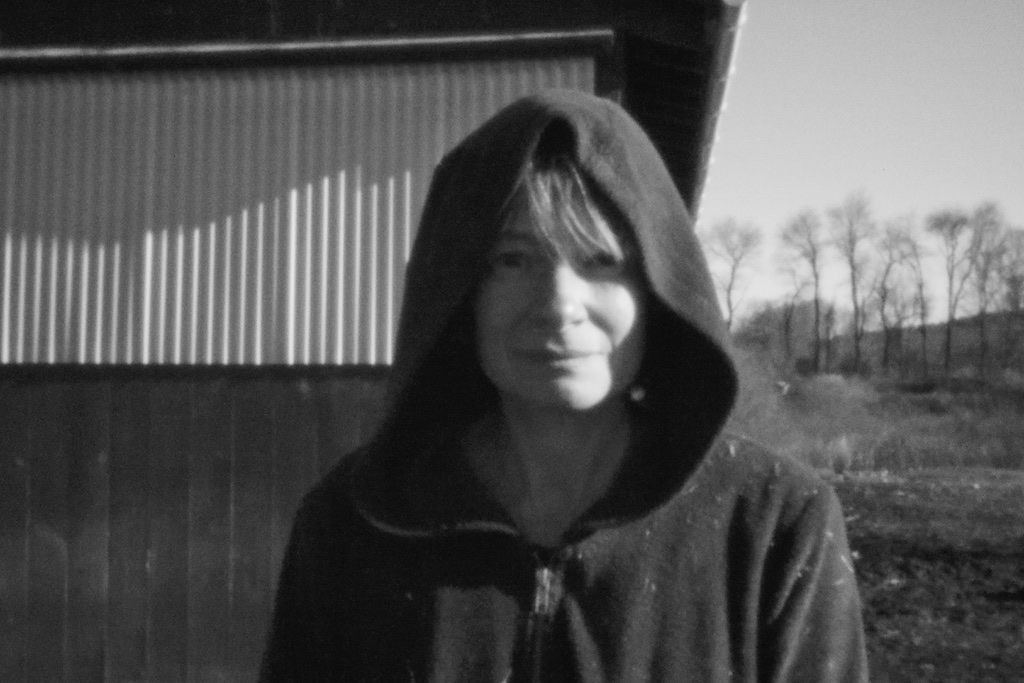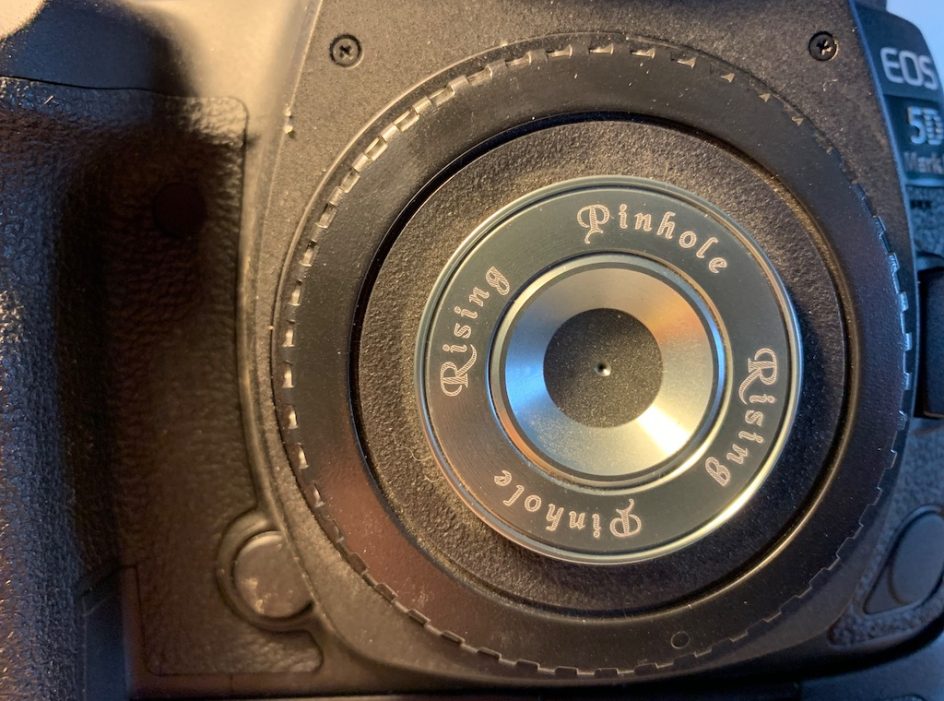My first successful Pinhole Portrait was, of course, Maria. I believe the only good portraits are those of people I like very much or love. Those are the good ones, so I persuaded Maria to pose for a second, something she hates to do.
I was pleased at this image of Maria from a completely different perspective, not literal, but evocative. It captured her indirectly, her Willa Cather quality that I love.
Pinhole photography is, for me, the most challenging photography yet. It is hard to get a good pinhole photograph, at least for me.
Pinhole photography is one of the oldest and simplest, perhaps purest forms of photography. A pinhole camera is a camera without a lens and with a single small aperture – essentially a light-proof box with a very small hole on one side, the first lens.
Light from a scene passes through this single point and projects an inverted image on the opposite side of the box. You can easily construct this camera yourself using match boxes (or any box), paper, and duct tape.
The small amount of light passing through this pin-sized hole produces an image on a photographic film or image sensor. This is known as the camera obscura effect.
If digital photography is meant to be precise, pinhole photography is meant to be obscure. Pinhole photography is the absolute opposite of digital photography in every imaginable way, so it takes a lot of experimenting and getting used to. You have to yourself all of the things the modern digital camera does for you.
Some writings from ancient China suggest pinholes were used to record images thousands of years ago. The first known description of pinhole photography was found in an 1856 book called The Stereoscope by Scottish inventor David Brewster. He described an invention as a “camera without lenses, and with only a pin-hole.” A book in 1764 by scientist refers to “pin-hole” in the context of optics.
I use my regular Canon 5 D for Pinhole photos, I can’t deal with a small paper box. I tried one, and it perished quickly in the rain and cold and snow of upstate New York. Too fragile for a farm.
I bought a Rising Pinhole lens for $20.
And then I start playing with the Aperture and ISO and White Light balance. I take 100 shots for every one that works, and I am constantly turning around, running back and forth, changing the distance and focal speed, moving the tripod to get the light or the sun in the right place. Mostly, I miss.
You need a strong ego and tons of patience to do digital photography. I am not famous for being patient or for details, so this, like dog training, is a spiritual exercise for me.
I know now that cameras are amazing but I also know that it is the human behind the camera who makes a photograph special or unusual. It’s his or her perspective, eye, passion, emotions and knowledge of light and the camera itself that makes for a really good photo.
It isn’t what the camera sees, it’s what the photographer sees.
I see lots of photos sailing across the Internet, but very few touch me or tell me much about the photographer, and I think of every photograph I take as a window into my soul. My proudest moment as a photographer when a woman came up to me and asked if I was Jon Katz.
That never happened before and probably will never happen again.
I was, I said, how do you know me. I knew you from your photographs she said. I wanted to hug and kiss her (I did not.)
I’m not sure anybody else sees it that way, but I do. Every photo has some emotion for me, and I have studies light and angles and settings every day for nearly 10 years now, I am beginning to understand some of it.
I use a computerized digital camera that has a pinpoint focus, automatic focus, image stabilizer and other tools that help me but also keep me from really understand light and how it works to make a great photograph.
I see every picture I take as a story about life, not just a recording of what’s in front of me. The Pinhole look has always fascinated me because the images are so timeless and even dramatic.
They take us back to another time because they are from another time. We are no longer used to this simplicity in the digital era, the early photos were not literal or crystal clear, but they evoked something.
Anyone with a camera like mine or a late-model Iphone can take a technically proficient photo, the camera does 80 per cent of the work, just like an Apple computer. You may never really get to understand the process, which is quite mystical and even magical.
So the Pinhole for me takes me back to the beginning of photography, when everything depended on light and patience, and a vision for every image.
Maria was a good choice for me, and I loved the way the Pinhole light caught the sun reflecting on her face and casting a shadow. It highlighted the strength I see in her, my Willa Cather woman, I call her.
I ever shoot directly into the sun with a Pinhole unless I want an explosion of light and brightness. I try to get the sun directly behind me. I change the Aperture and USO and shoot on manual most of the time.
This was my first successful portrait and I learned a lot from it. I’m hoping to work on Pinhole photography this week and will share the work, if I can figure out how do it.



What a beautiful subject. And the emotion in that photo is so very lovely.
Truly beautiful. I love the depth it revealed…especially in Maria’s face.